Work-from-home vs. the good ol’ office? While the jury is still out on this one, we believe that you don’t have to choose. Unifying your hybrid workplace will give you the best of both worlds and help your team thrive in the post-COVID world.
In today’s article, we take a look at the hybrid workplace model which offers a smooth —as smooth as you can hope for anyway—transition into the “New Normal.” You’ll also learn how to unify your hybrid team’s workflow and boost productivity down the road.
💡 Before you start… This article is part of our “workplace trends” series. Be sure to check other similar stories on the blog when you’re done here.
- 👨💻 Remote-Friendly vs. Remote-First Culture: On the Crossroads
- 🌱 How Remote Work Can Impact Our Fight Against Climate Change
- 🚀 Virtual Coworking: From WeWork to a Fully Remote Workplace
🧭 Looking to the Future of Work
Ever since the question of coming back to offices has popped up, the pre-pandemic “remote or not” debate has gained another metaphorical fork in the road.
“Although the pandemic has intensified the discussion around the pros and cons of working from home, and what working without an office means, it is safe to conclude that the best alternative is not to opt between one or the other, but to give employees the option.”
Dr. Tomas Chamorro-Premuzic, “Thriving in the Age of Hybrid Work”(1)
The latest U.S. Remote Work Survey by PwC found that the majority of businesses and employees predict the hybrid model to take heed in the following months.
- 💼 68% of executives expect an in-office time of at least 3 days a week.
- 📈 Businesses predict 50% office capacity by the end of 2021.
- 🖥 72% of execs plan to invest in virtual collaboration tools.
- 👨💼 Over 50% of employees would like to work remotely for 3+ days a week.
- 🏢 61% of executives plan to consolidate existing office spaces.(2)
This trend seems to sit well with industry leaders like Facebook, HubSpot, Spotify, Infosys, PayPal, and others. While these companies are calling their workforce back to their nests, they leave plenty of headspace to accommodate remote work long-term.
Those who go a step further make an even bigger impact on the industry.
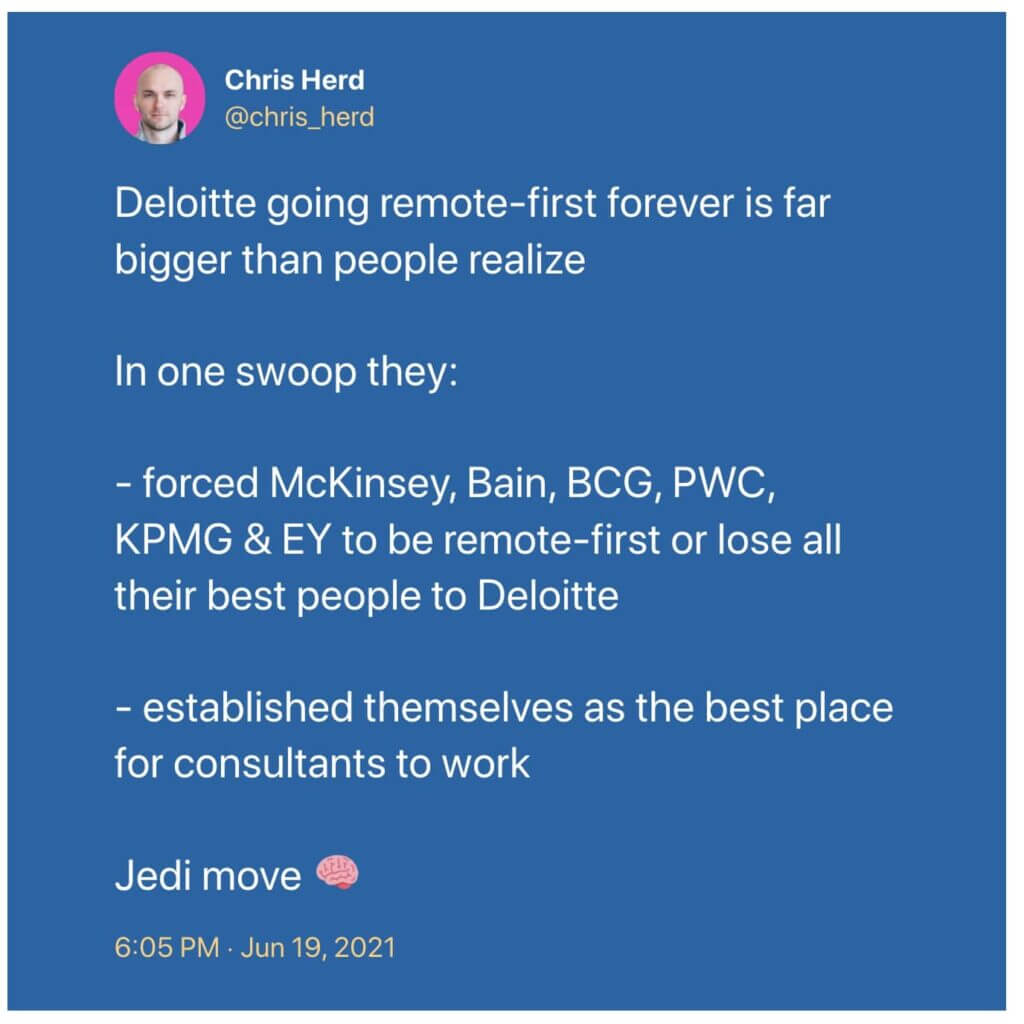
With things as they are, the hybrid model is a suitable candidate for the “New Normal.” So, what do you say we learn how to make the most out of it?
🤹♀️ The Hybrid Workplace Model Explained
The modern hybrid workplace is a step up from the pre-pandemic 1-2 days of remote work per week. Instead of following a set workflow, hybrid knowledge workers get to decide how many remote/office hours they need to get work done.
Here’s why you should consider a hybrid model in your team. 👇
3 Benefits of the Hybrid Workplace Model
1. Your Team Can Work in Optimal Conditions
The overnight pivot to remote proved a bittersweet treat. For some, the switch panned out great, with increased productivity and improved working conditions. Others, especially those with kids at home, are eager to dust their office workstations.
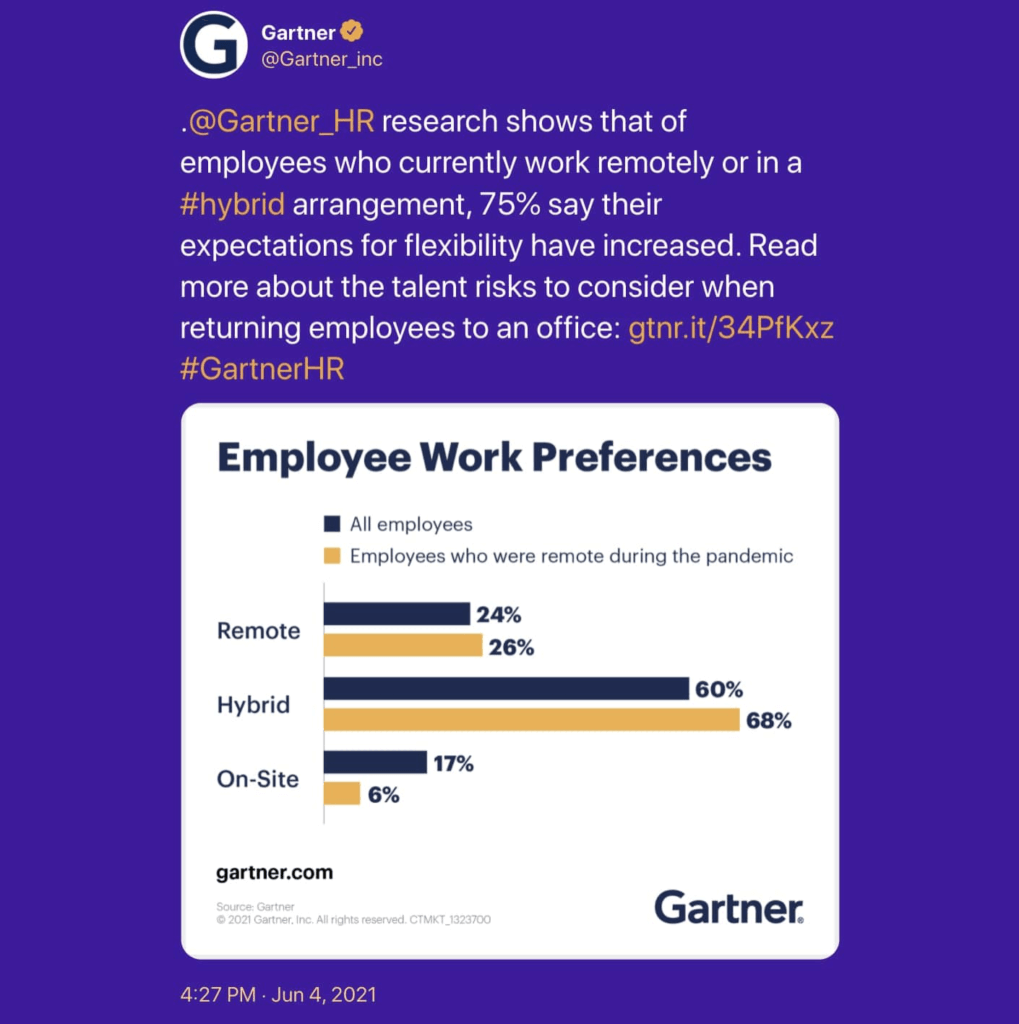
So, why go hybrid?
The hybrid model gives teams and organizations a leeway to customize the workflow to suit individuals’ preferences. And there’s plenty of variety out there.
Those with a less-than-ideal home office environment are surely going to welcome the familiar office surroundings. Meanwhile, knowledge workers with more flexible work-life arrangements can cycle between remote and office work more freely.
The bottom line is, a true hybrid workplace accommodates many different work styles, preferences, and personal circumstances. And that’s a step in the right direction.
2. The Framework Is Already in Place
Many companies—even those without adequate infrastructure before 2020—have managed to adapt to the new situation and build remote frameworks overnight.
That means that we’ve put together complete IT infrastructures, stocked on hardware, drafted remote processes, and upskilled or reskilled staff in just under a year.
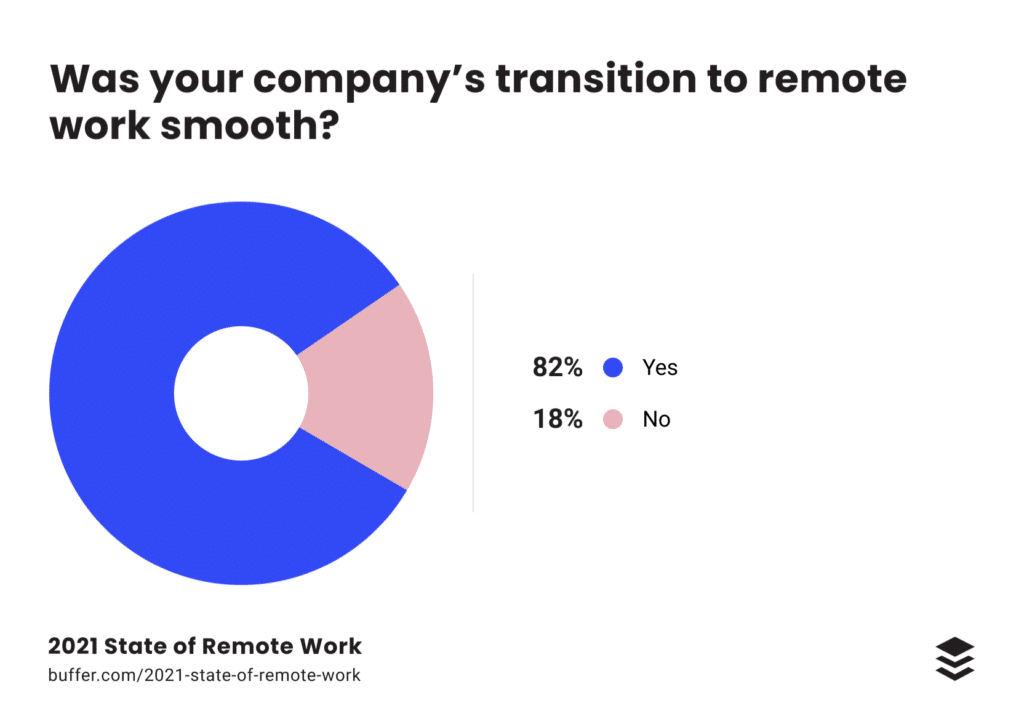
Buffer’s State of Remote Work 2021 report(3)
Adopting a hybrid model is the next logical step in this evolution. A gentle transition and rotating shifts will provide critical data insights for improving remote workflows, one step at a time.
Another less tangible benefit is that time-oriented productivity—based on how much time an employee spends in front of their computer—is no longer king. Instead, we’re starting to embrace a goal-oriented approach where the results are all that matters.
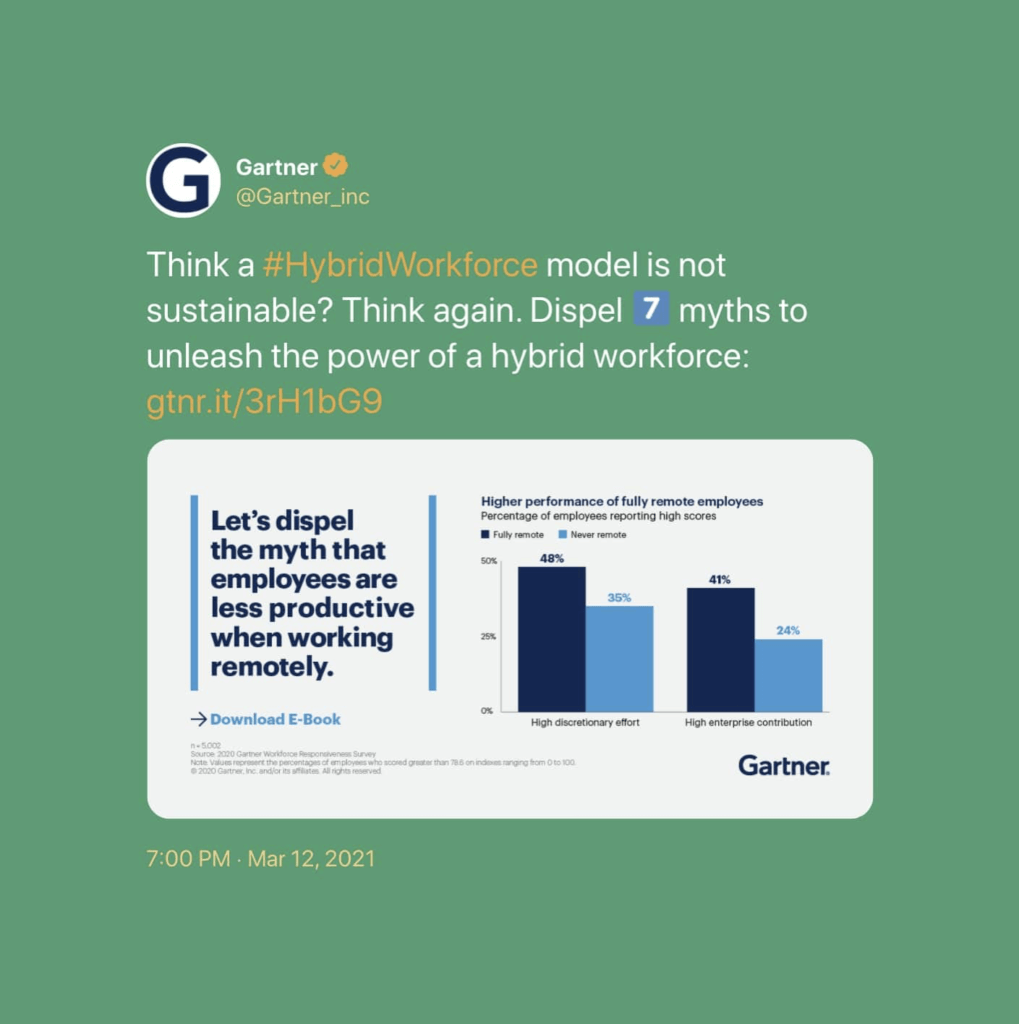
3. Hybrid = Well-Being, Plus It’s Good for The Environment
The pandemic has made us more aware of the importance of physical wellbeing and mental health. And this workplace trend is picking up speed.
“It’s not just employees who are suffering from pandemic-related mental health issues. Their kids are, too. Months of distance learning, isolation, and worry have led children to experience increased rates of stress, anxiety, and depression.”
Tim Allen, “The Pandemic Is Changing Employee Benefits”(4)
The hybrid model lets part-time telecommuters accommodate professional and personal interactions. It also lets us spend more time with family and friends and improve work-life balance while keeping camaraderie at work high.
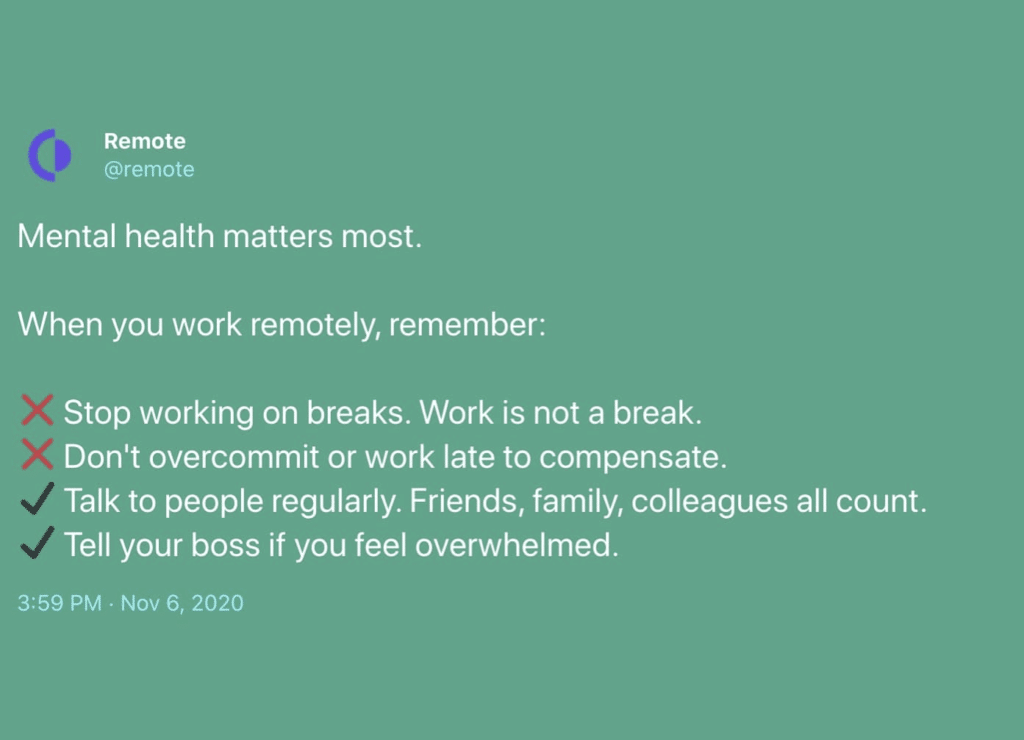
But that’s not all.
A hybrid approach gives employees the freedom to design better workflows from the ground up. It involves less micromanagement, helps build better work habits, and creates more accommodating work conditions.
Finally, hybrid teams and organizations prioritize asynchronous communication. And that means they have more quality time for deep, focused work.
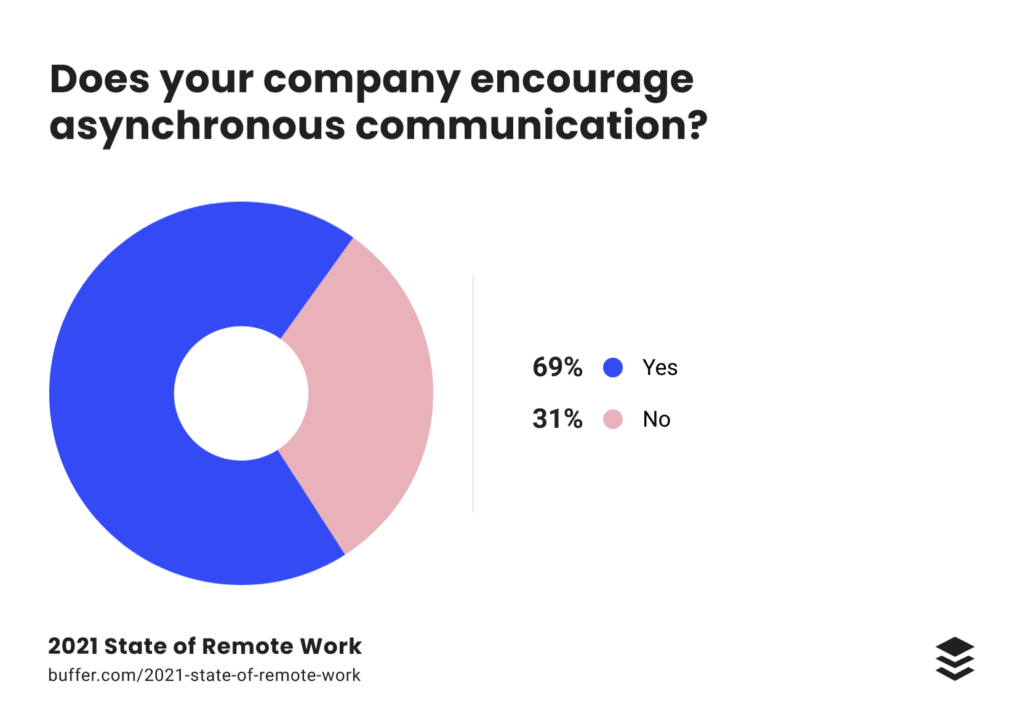
Buffer’s State of Remote Work 2021 report(3)
And let’s not forget about the environment.
Working from home—even if it’s only part-time—reduces commutes, which translates to a significantly lower carbon footprint. And that’s nothing to sneeze at considering that the pandemic reduced global carbon emissions by 5.8% (2020).(5)
Want to learn how remote work affects the environment? Be sure to check our article How Remote Work Can Impact Our Fight Against Climate Change 🌳.
🌟 How to Create a Unified Hybrid Workplace
Both hybrid and fully remote workplaces have their challenges. Here’s a list of five steps that’ll help you overcome them and build synergy in your hybrid workplace.
1. Put a Solid Foundation in Place
The hybrid model is based on transparency, empathy, and trust.
“Particularly important is establishing a culture of psychological safety and (individual/collective) trust. This will increase the likelihood of employees speaking up and asking for resources when they need them, as well as their confidence that their efforts will be recognized.”
”Making the Hybrid Workplace Fair” via HBR(6)
As a manager, you trust your team to always bring their A-game, regardless if they’re in a cubicle or get work done from their living room. Your team members trust that you care about their wellbeing, have confidence in their abilities, and don’t micromanage.
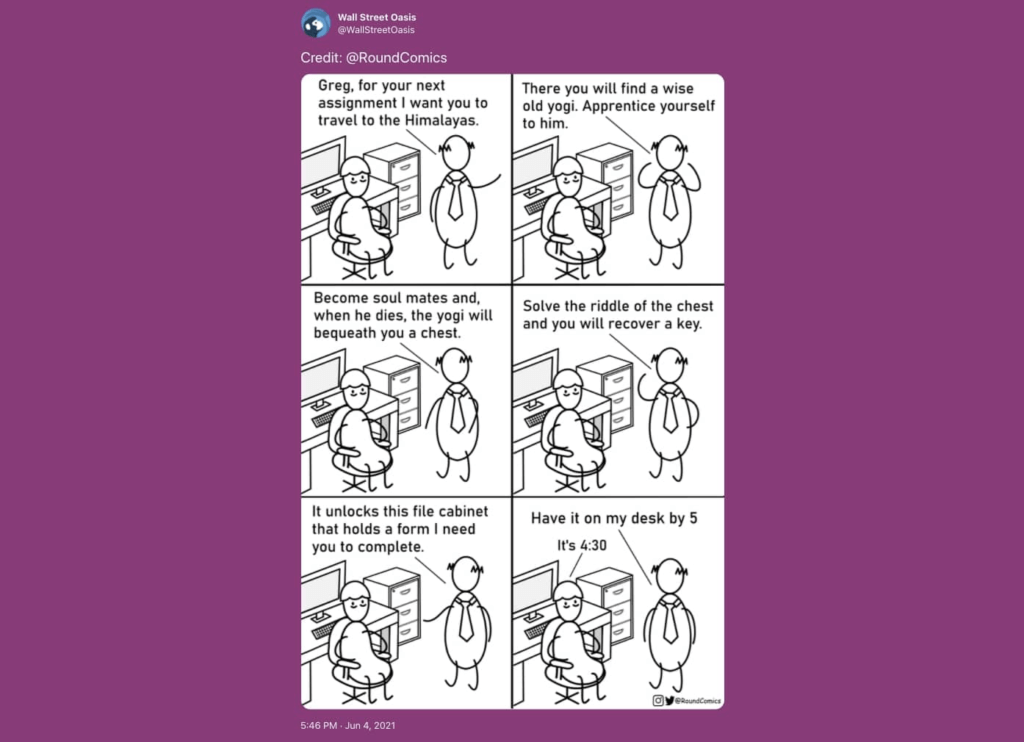
To make things stick, you also need to throw in transparency and a whole deal of empathy. Here’s how to incorporate both in your hybrid team.
- 🔎 Scope your team’s workflow preferences and expectations.
- 🗓 Schedule office/remote work based on personal situation.
- 👥 Involve the entire team in the transition process.
- 📣 Foster constant communication to bridge office and remotes staff.
- 🔄 Always keep the entire team in the information loop.
- 🎯 Opt for task-oriented vs. time-oriented productivity.
2. Explore Your Hot-Desking and Hoteling Options
Hot-desking/hoteling are office organizational systems in which desks are used on an ad-hoc, rotational basis. Instead of assigning a desk to an individual employee, you open workspaces for “booking.”
If your company is scaling down its HQ or consolidating locations, hot-desking will help you cut down costs and ease the transition from hybrid to a fully remote model. It’s also a perfect solution if your headquarters are operating at a limited capacity.
Here’s how to get hot-desking/hoteling right:
- 🗓 Implement IT infrastructure to aid booking.
- 🧘♂️ Arrange personal working spaces for deep work sessions.
- ⚓️ Assing permanent desks to office-first team members.
- 🔌 Keep a stock of dongles, mouses, keyboards, and chargers.
- 📑 Roll out a hot-desking/hoteling etiquette.
- 🤝 Create clustered “neighborhoods” for teams.
- 🗄️ Make sure there’s an appropriate locker solution in place.
- 🦠 Ensure desk hygiene and provide a regular sanitation service.
3. Provide Equal Career Opportunities
According to The Future of Jobs Report (2020) by the World Economic Forum, half of the global workforce will require some form of reskilling by 2025.
“Developing and enhancing human skills and capabilities through education, learning and meaningful work are key drivers of economic success, of individual well-being and societal cohesion.”
The Future of Jobs Report 2020, The World Economic Forum(8)
The key takeaway? You need to equalize the career advancement and learning opportunities available to your team members. That applies both to in-house L&D options and external trainers.
The direction and velocity of your L&D strategy will play a major role in the transition.
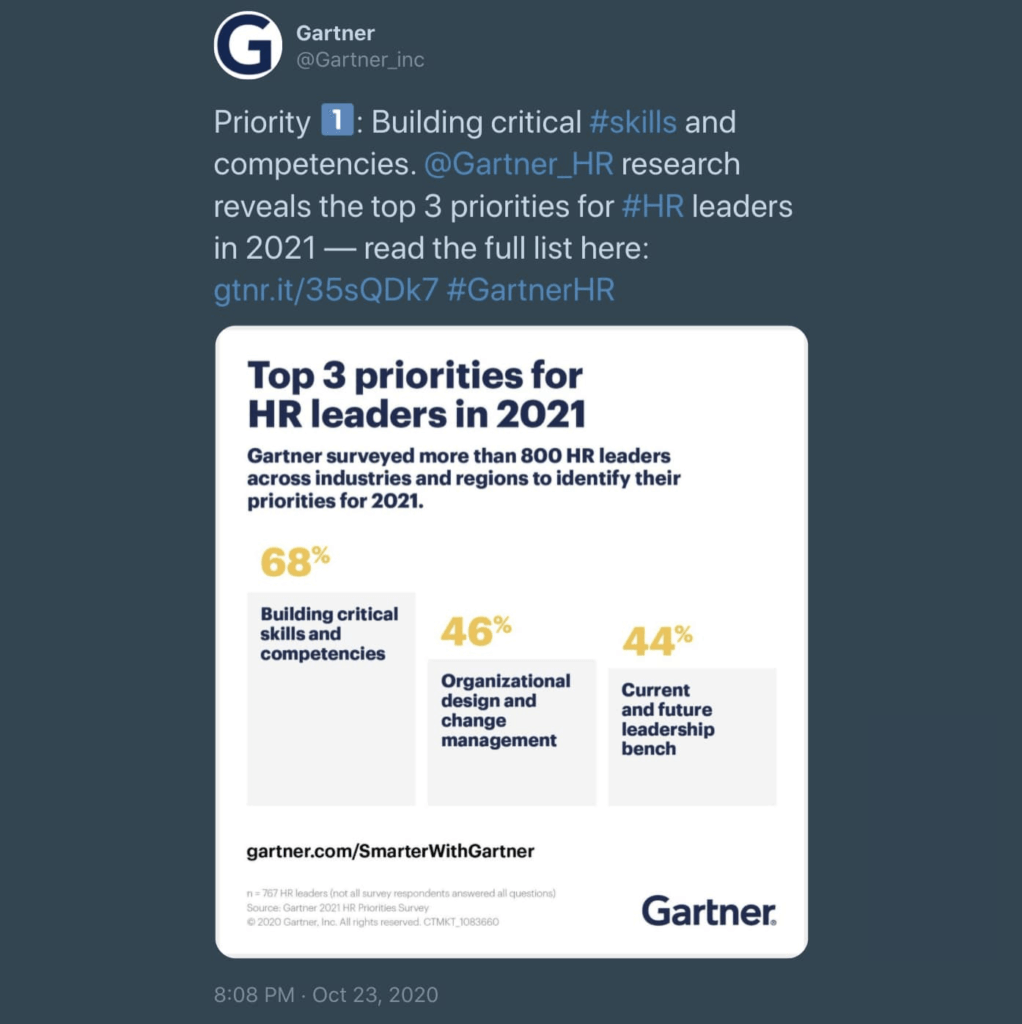
It would be unfair to stunt your team members’ growth only because they don’t punch in on Monday mornings. The key is to draw transparent and accessible career opportunities as well as maximize the visibility of the people who work remotely.
Consider the following steps:
- 📈 Make career development opportunities consistent across the team.
- 🍒 Prevent cherry-picking opportunities by co-located team members.
- 💾 Offer appropriate training formats/materials to off-site staff.
- 📚 Create a knowledge base for easy access to team knowledge.
- 🤹♂️ Supplement virtual learning with access to local workshops/classes.
- 💰 Offer a talent development stipend for self-directed learning.
4. Teach Your Team How to Stay Safe When Remote
The global shift to remote work left little time for preparations. Inadequate security and IT infrastructure as well as a lack of user training and awareness took their toll.
Verizon’s 2021 Data Breach Report found a significant increase in cyberattacks, with a 36% and 10% rise in phishing and ransomware attacks respectively.(9) The number of data breaches spiked by as much as 273% compared to 2020 .(10)
Hybrid teams pose a completely new cybersecurity challenge. Poor cyber hygiene, insecure wireless networks, and employee mobility call for a holistic approach.
- 🔒 Make sure all devices used by your team are patched and updated.
- ☝️ Provide training and cybersecurity awareness workshops.
- 🛑 Ban using personal devices for work and vice versa.
- 👩💻 Use safe collaboration tools with strong security features.
- 🔒 Enforce a virtual private network (VPN) and password manager.
5. Unify the Hybrid Workplace With Taskade
Coordinating a hybrid team can be a nightmare. Not only do you need to account for different working patterns and varying time zones, but you also need to consider that people will be using different modes of communication and tools to get work done.
Luckily, there’s a solution.
Taskade is a unified, real-time organization and collaboration tool for remote and hybrid teams. It’s one simple tool that lets you coordinate your remote and co-located team members in a centralized and holistic way.
Taskade will let you:
- 🧘♀️ Coordinate remote and office team members in a single app.
- 🚀 Create a productivity hub where the team can work and chat.
- 💬 Shuffle synchronous and asynchronous communication.
- 🧠 Build a centralized knowledge base, FAQ, or a team wiki.
- 🤹 Handle team communication, collaboration, and coordination.
- 🎯 Set and track goals and objectives across the entire team.
- 🌳 Mindmap ideas, outline projects, and set things in motion.
- 🤝 Onboard new team members 100% remotely.
- 🔐 Secure your team’s data with two-factor authentication and single sign-on.
- And more…
With Taskade, your team will always have access to up-to-date business intel whenever and wherever they are. It’s a hybrid manager’s dream come true.
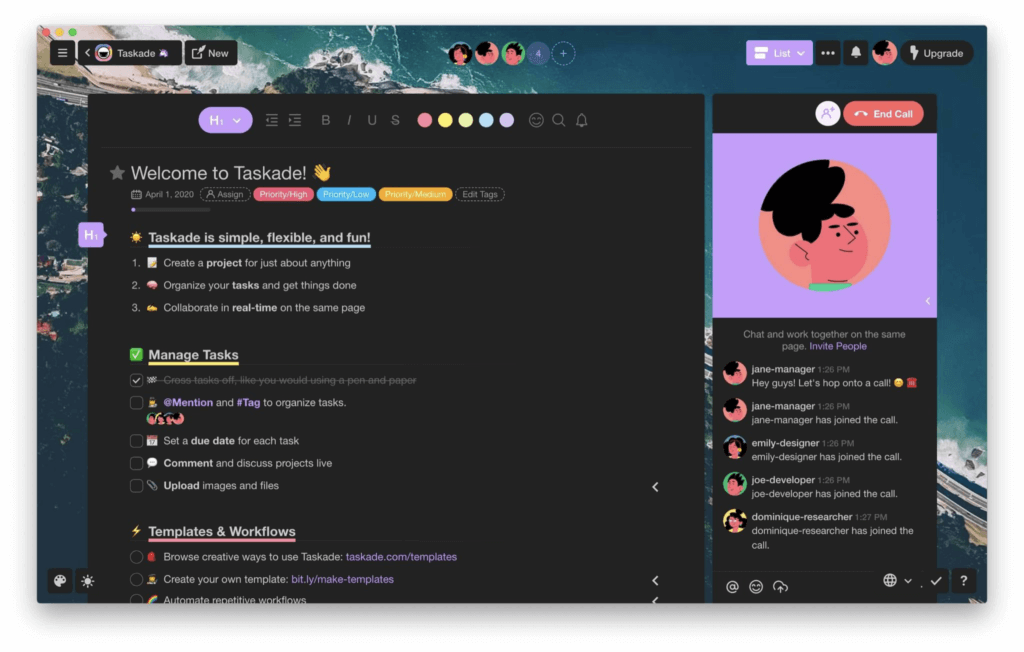
But hey, don’t take our word for it. Check the Live Demo to test-drive our key features and sign up for a no-strings-attached free account when you’re ready (click)!
👋 Conclusion
As much as we love remote work, the hybrid model may be the most frictionless approach to enter the post-COVID world. Not only does it come with plenty of flexibility but also gives us time to gather data, reorganize, and move ahead. So, what are you waiting for?
- ⚡️ Put a solid foundation in place.
- ⚡️ Explore your hot-desking and hoteling options.
- ⚡️ Provide equal career opportunities.
- ⚡️ Teach your team how to stay safe when remote.
- ⚡️ Unify the hybrid workplace with Taskade.
🤖 Custom AI Agents: Deploy autonomous AI agents to support communication and collaboration across remote and hybrid teams.
🪄 AI Generator: Generate comprehensive strategies, documents, and workflows tailored to your team’s requirements and expectations.
✏️ AI Assistant: Use the AI Assistant to streamline team communication — brainstorm, write, and edit with the power of GPT-4 Turbo.
🗂️ AI Prompt Templates Library: Access AI prompts designed to speed up tasks like content creation, brainstorming, planning, and more.
And much more…
🔗 Resources
- https://hbr.org/2021/01/thriving-in-the-age-of-hybrid-work
- https://www.pwc.com/us/remotework?WT.mc_id=CT10-PL102-DM2-TR1-LS3-ND30-PR4-CN_ViewpointHighlights-
- https://buffer.com/2021-state-of-remote-work
- https://hbr.org/2021/04/the-pandemic-is-changing-employee-benefits
- https://www.iea.org/articles/global-energy-review-co2-emissions-in-2020
- https://hbr.org/2021/02/making-the-hybrid-workplace-fair
- https://www.wework.com/ideas/workspace-solutions/flexible-products/what-is-hot-desking
- http://www3.weforum.org/docs/WEF_Future_of_Jobs_2020.pdf
- https://www.verizon.com/business/resources/reports/dbir/
- https://www.citrix.com/fieldwork/secure-workforce/6-security-and-privacy-questions.html



 14 Best AI Tools for Planning and Running Meetings
14 Best AI Tools for Planning and Running Meetings  Creating Customer Service SOPs: A Guide for Streamlining Your Support
Creating Customer Service SOPs: A Guide for Streamlining Your Support 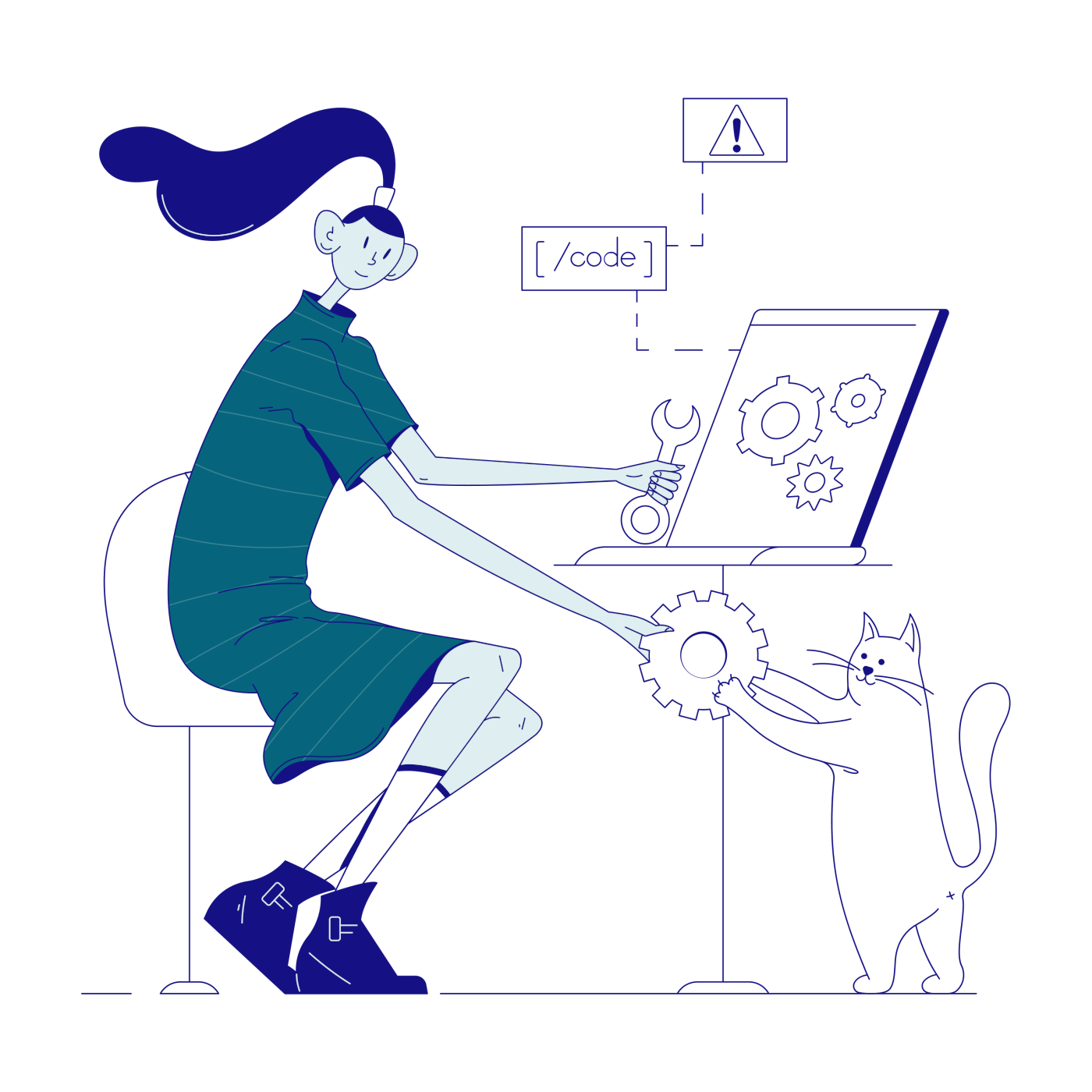 15 Top AI Content Marketing Tools for Remote Teams
15 Top AI Content Marketing Tools for Remote Teams  9 Top AI Brainstorming Tools for Virtual Teams in 2024
9 Top AI Brainstorming Tools for Virtual Teams in 2024  14 Best AI Collaboration Tools for Remote Teams (Updated 2024)
14 Best AI Collaboration Tools for Remote Teams (Updated 2024)  What Are SOPs? Building Effective SOPs With AI in 2024
What Are SOPs? Building Effective SOPs With AI in 2024